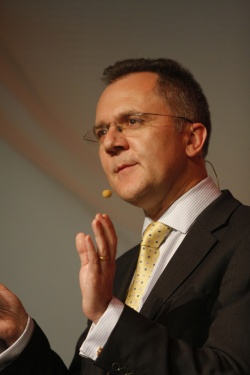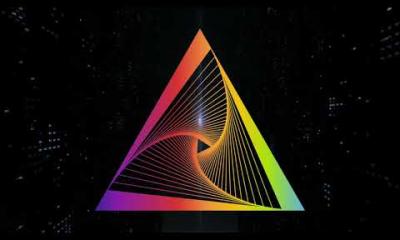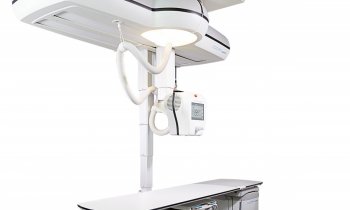Cardiac CT
Aquilion ONE delivers ultra-low dose for cardiac CT
An independent survey by the British Society of Cardiac Imaging finds Toshiba Aquilion scanner delivering ultra-low radiation doses for cardiac CT. "This data is possibly the most powerful thing I can show about the Aquilion ONE with the PUREViSION detector," said Russell Bull, M.D., Consultant Radiologist at the Royal Bournemouth Hospital in Dorset, the United Kingdom.

"This data is possibly the most powerful thing I can show about the Aquilion ONE with the PUREViSION detector," said Russell Bull, M.D., Consultant Radiologist at the Royal Bournemouth Hospital in Dorset, the United Kingdom.
"This is an independent audit, so I can't fix these numbers," he added before showing the results of dose data collected at the Royal Bournemouth Hospital as part of a survey conducted by the British Society of Cardiac Imaging (BSCI) across multiple centres that is now being prepared for publication. This audit of unselected cases at the Royal Bournemouth Hospital performed over a period of 1 month showed that the median DLP delivered by the Aquilion ONE with PUREViSION detector was 77.5 (1.08mSv). All patients were included in this audit including patients with atrial fibrillation and high body mass index. This radiation dose of around 1mSv for an unselected population is amongst the lowest ever recorded for cardiac CT’
The BSCI audit is part of an effort for greater transparency, according to a commentary by the President of the British Society of Cardiovascular Imaging, Stephen Harden, M.D., in the March, 2014 issue of The British Journal of Radiology.
Harden notes that the biggest limitation to more widespread CT use has been the radiation dose, which typically ranged from 15 mSv to 30 mSv in the past. Improvements in hardware, such as detectors, or software with iterative reconstruction have dramatically reduced doses to sub-millisievert levels for some exams.
"Should we therefore not take the next logical step and accept that radiation dose is a marker of quality practice?" Harden asked.
According to Dr. Bull, "what is likely to happen in the future is that all cardiac imaging centers in will be encouraged to publish their radiation doses and it is hoped that this approach will drive reduction in radiation doses across the country ‘’
With the breakthrough detector technology of the Aquilion ViSION, the Royal Bournemouth Hospital is not only well-positioned for the new transparency but is capable of redefine standards for As Low As Reasonably Achievable (ALARA).
28.11.2014











